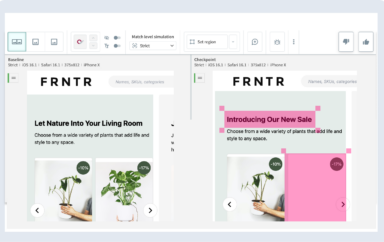AI is needed to meet the scale and complexities of modern software delivery. According to the EMA report, traditional test automation tools will continue to struggle to keep up.
A growing challenge for organizations reliant on software (in other words, just about every organization today) is the ever-rising scale and speed of software delivery. Software is growing more complex, users are demanding more from their experiences, and release cycles are getting shorter and shorter. All of this puts an enormous strain on the testing teams charged with ensuring that applications are error-free and delivering the desired user experience.
AI is one technology that can ease this burden on today’s testers, according to EMA Research, which has just released a research paper on the topic. The need to create better software, faster, has never been greater.
“Business’s ability to accelerate the delivery of customer value through software innovation, at lower cost, has become critical for achieving competitive advantages,” said Torsten Volk, Enterprise Management Associates Managing Research Director.
Software Testing Complexity is Increasing
The report highlights a number of data points showing the increasing complexity of testing environments. The number of test automation-related questions posted to StackOverflow has nearly doubled over the past year. Smartphones continue to proliferate at a very high rate (30% CAGR since 2017 for Android alone), adding yet more configurations that need to be tested. Apps residing in a growing number of cloud services has risen 225% since 2015, compounding the complexity of software delivery.
In an article on the topic, VentureBeat recently highlighted another report on enterprise software development by Gatepoint Research which emphasizes some of the same struggles. According to that report, 77% of respondents said that they experience setbacks in releasing new software. A smaller but still high 34% said that fixing bugs takes anywhere from days to months.
Overall, EMA found that the increase in the complexity of technology, combined with faster release cycles and the daily tasks that already exists for test engineers, combines to yield an exponential increase in testing effort required. It doesn’t help that, as EMA puts it, “test automation frameworks typically rely on a jungle of test scripts written in different languages, using different sets of runtime parameters, and lacking consistent compliance test capabilities.”
AI is Critical to Modern Software Testing According to EMA
The research by Torsten Volk and his team makes clear in no uncertain terms that “you cannot scale automated testing without AI.” The paper outlines how the latest AI solutions help in five key categories today, and digs into how AI can help address six of the biggest test automation pain points.
“AI-based test automation technologies can deliver real ROI today,” said Volk, “and come with the potential of addressing, and ultimately eliminating, today’s critical automation bottlenecks that stifle modern software delivery.”
EMA’s research discusses several essential AI capabilities that can combined and customized according to an organization’s requirements. Visual inspection (with Visual AI) was rated as having the highest overall impact of these capabilities, both today and in the future:
Smart crawling, self-healing, anomaly detection, and coverage detection each are point solutions that help organizations lower their risk of blind spots while decreasing human workload. Visual inspection goes further compared to these point solutions by aiming to understand application workflows and business requirements.
-Disrupting the Economics of Software Testing Through AI
To learn more, download the complementary report, “Disrupting the Economics of Testing Through AI.”




